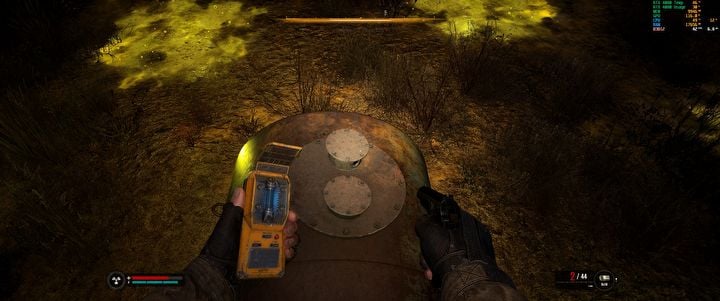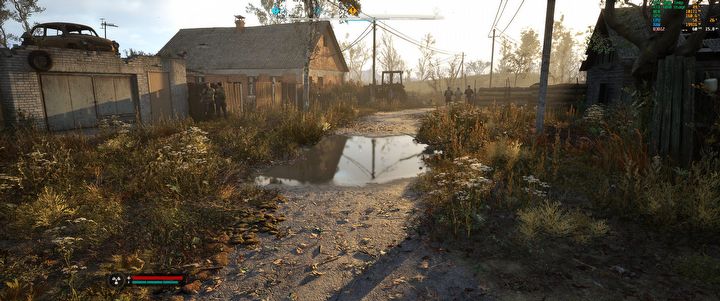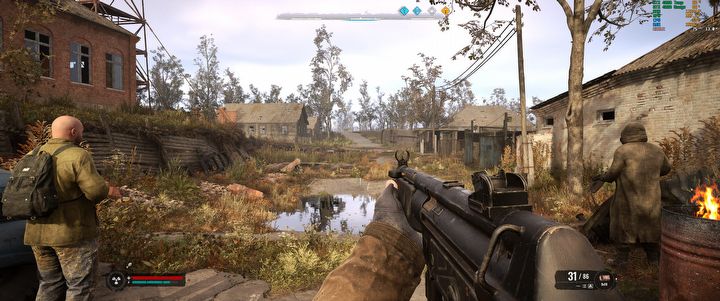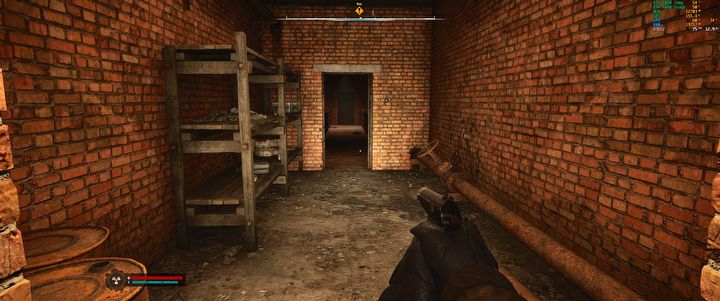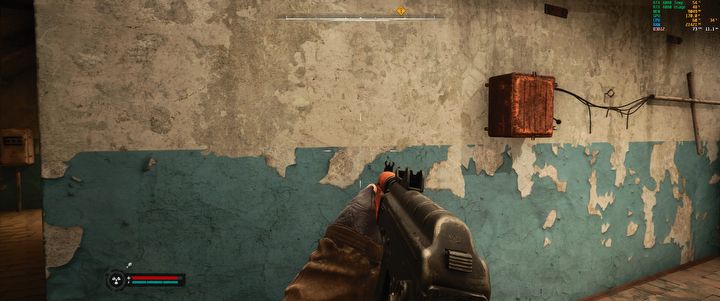STALKER 2: Heart of Chornobyl Tech Review. Your PC Will Burn After Entering the Zone
I didn't have high expectations for the optimization of STALKER 2 Heart of Chornobyl, yet I was still disappointed. The game performs poorly, it's riddled with bugs and it's hard to enjoy the phenomenal gameplay under this thick shell of shortcomings.
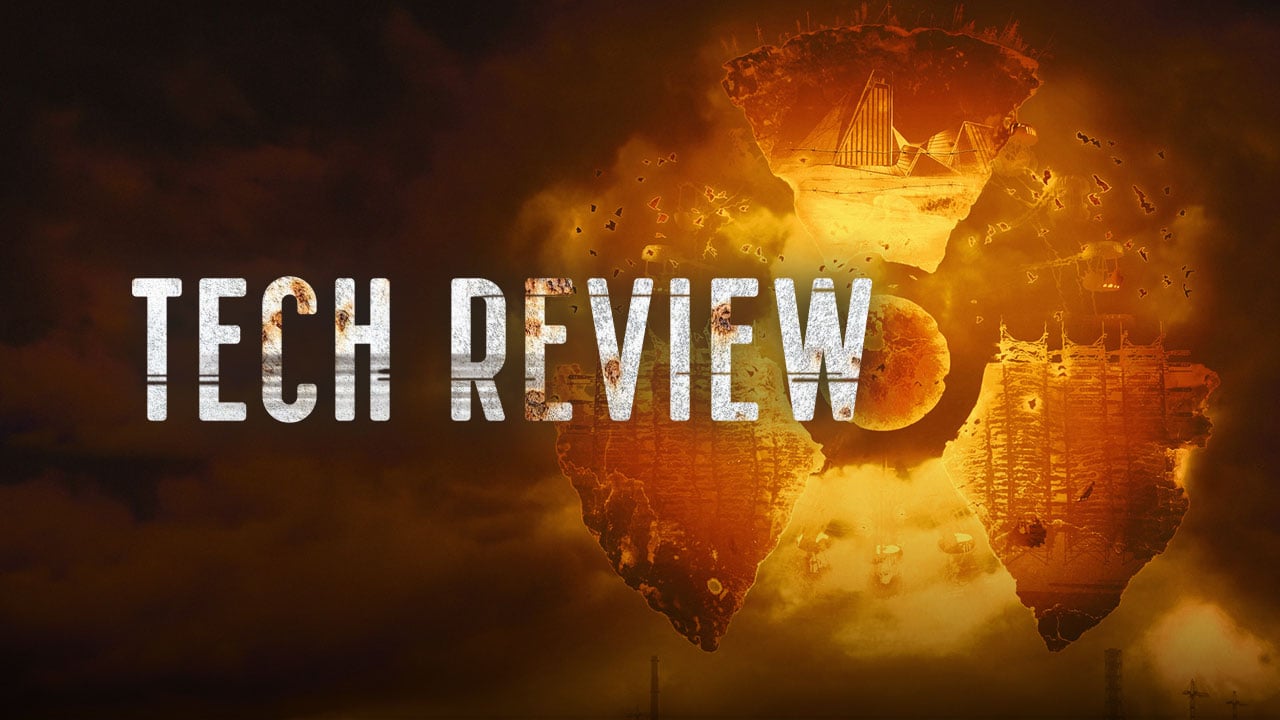
Before we move on to the core of this review, I must note that I have never had any contact with the Stalker series. When the first game was released, I was 10 years old and FPS wasn't my favorite genre. However, I remember Stalker relatively well, mainly from stories told by older colleagues and plenty of memes and anecdotes related to modding it. Until now, I had an image in my head of a post-apocalyptic Skyrim, which also has its fair share of problems and it is the community that brings it to a usable state.
However, I assumed that STALKER 2: Heart of Chornobyl, which is coming to PC and Xbox Series X/S on release day, will be a bit more polished. You know, it's a flagship position of Game Pass, postponed for years to subsequent dates and created in pain for over a decade. Of course, armed with the internet's wisdom, I assumed that certain "hiccups" simply had to occur at the time of its release. What I found exceeded my expectations – STALKER 2: Heart of Chornobyl, at the time of writing this text, is in very poor technical condition, and only owners of very, very powerful PCs can get smooth gameplay. I also think that the system requirements given by the developers are overly optimistic and if you were hoping to meet those recommended, you are likely to be disappointed.
- nice (though uneven) graphic design, perfectly capturing the atmosphere of the Zone;
- incredibly immersive environmental effects;
- amazing sound quality;
- bugs, glitches, errors and more bugs;
- poor performance scaling;
- performance on the release day is abysmal;
- it's clear that the game was in development for a long time, some elements feel outdated;
- Unreal Engine 5 in the worst edition - a CPU devourer and lag generator;
- constant problems with disappearing sound effects.
Burn, my CPU, in this beautiful world
S.T.A.L.K.E.R. 2: Heart of Chornobyl was tested on a PC equipped with an Intel Core i5-13600K CPU, an Nvidia GeForce RTX 4080 graphics card and 32GB of RAM. In theory, my PC should meet the highest requirements (Epic), although it might be slightly limited by the processor, because the i7-13700KF is a slightly more efficient unit. Instead of the 4K resolution promised by the developers, the game was running at 1440p on my system, so theoretically the graphics card should also have a slightly easier time than the requirements suggest.
The first location in the game showed me only part of the performance issues that I would encounter later. I set all the sliders all the way to the right (Epic), set DLSS to quality mode and immediately noticed that the CPU usage was well over 50%, often reaching around 60%, and even 70%. It was disturbing, but it got worse when I saw that the graphics card usage did not exceed 85%. This meant that the game was definitely limited by the processor and I was just hoping that it wasn't too much. Oh, how wrong I was.
After going out into the open area, the situation calmed down a bit, and the fps counter fluctuated quite strongly, showing from 60 to even 80 frames per second. It was bad when I met the first NPCs and a group of enemies, because then STALKER 2 started dropping frames, literally for a split second, but I guess I don't have to explain how irritating they were.
You will learn the importance of having a good processor even before you start the actual gameplay, because STALKER 2 compiles shaders before every launch. The first time it took me 3 minutes, but on weaker processors this time was even twice as long. It took 16 minutes on the Steam Deck (which I'll talk about later)! During subsequent launches of the game, the time needed for the shaders to buffer varied for me between 30 seconds and a minute.
The real drama began after entering Zalissya village/outpost. In the place that I somewhat spitefully called the "Zalissya gate," the frames per second counter dropped to 33 while running, and when I stood still, allowing the game to load a bit, it stopped at about 47 fps. The usage of the processor and graphics card was then roughly equal and fluctuated around 60%, which already indicated a significant bottleneck on the CPU's side. Interestingly, the processor model doesn't matter much here, because my fairly new Core i5-13600K achieved almost exactly the same results as one of my colleague's old Core i7-9700KF, even though on paper my CPU is much more efficient.
It became even funnier when I saved the game at this point and checked how changing the settings would affect performance. Switching from epic to high gave me one more frame per second, moving to medium added 2 more fps, and setting everything to the lowest possible details added another 2 fps. So as you can see, in places that put a lot of strain on the processor, changing the graphics settings does nothing or very little.
An increase from 47 fps on epic settings to 52 fps on the lowest settings is definitely not worth it. When I walked a few meters further into the outpost, I could count on a very unstable 60-70 frames per second, which often changed to 50 fps when looking around faster.
At the time of writing this text, the only remedy for such absurdly large performance drops is to enable Nvidia's DLSS frame generator. STALKER 2 is a perfect example for Nvidia to be proud of their technology because it saves what little performance the game has. After enabling Frame Generation, I got over 80 frames per second in Zalissya, and outside the city, the frame counter showed well over 100 fps. The game also offers FSR 3 frame generation, but it didn't work for me. After enabling FSR instead of DLSS, the game behaved as if only upscaling was enabled without generating additional frames. This will probably be fixed in a patch.
The bad news is that enabling the frame generator does not eliminate these sudden and annoying stutters. When the base number of fps drops from, say, 63 to 37, you can definitely feel it, even with frame generation. For the smoothest experience, I locked the fps counter at 75 and for 98% of the time the game worked exactly as it should. Unfortunately, such micro-stutters, typical of games running on Unreal Engine 5, regularly occur at random moments and are much more irritating here than in other games. It looks like this: during a sprint straight ahead for 9.8 seconds everything is great and smooth, but in those fractions of a second the game stutters, disrupting the smoothness.
Basically, I didn't have longer sessions than 5 minutes without some quite annoying lag, which really drove me to fury and a few times I just turned off the game because I didn't want to constantly look at these stutters. Perhaps the developers will fix this, but it won't be easy.
When it comes to graphics cards, the RTX 4080 is more than sufficient for gaming at the highest graphic settings, in 1440p resolution with DLSS set to quality mode. The GPU is enough to maintain 60 frames per second, but the processor mentioned earlier will be a much bigger problem here.
When it comes to slightly weaker units, the models suggested by the developers in the system requirements seem to perfectly match the specific detail levels. For smooth gameplay, RTX 3070 Ti should be sufficient, and a slightly older RTX 2070 Super (which my editorial colleague Iza has) should have no problems with running the game in 1080p resolution and on medium settings. I also recommend limiting your frames per second to a specific, achievable value for your hardware, as it significantly improves the game's stability.
It's no coincidence that the developers recommend having 32 GB of RAM starting with the recommended settings, because STALKER 2 is a voracious beast hungry for RAM. During the game, RAM usage ranged from 20 to 22 gigabytes, and my editorial colleagues with 16GB PCs reported that STALKER 2 used all available resources. If you plan to play on high settings, then 32 GB of RAM is basically essential, unless you want to risk even more lags and crashes than normally.
There are so many bugs here that there's enough for everyone
You already have an idea of what you need to consider in terms of performance, and now let's move on to the game itself, its stability, and bugs that may occur during gameplay. There are simply too many of them. STALKER 2 is just a festival of bugs, errors, glitches and all kinds of problems that a game can have on release day.

Kuba Paluszek: STALKER 2 can look phenomenal if we have the right hardware. It's not always the classic form of beauty, but rather the intended, grotesque ugliness, but that's the rhythm in which the heart of Chornobyl beats. The problems started for me when my PC, meeting around the recommended requirements for medium details, began to choke heavily, and generating frames from AMD was the only way to have 60 frames per second. There are frequent graphical or collision glitches, and updates haven't changed much in this regard so far, even though they weighed over 100 gigabytes... There are plenty of quirks here, probably resulting from combining new technologies with a mess that has been in development for 15 years, because even shader compilation occurs here every time the game is launched.
The most glaring from the gameplay perspective were the moments when the game simply made progression impossible. Everyone in from our editorial staff who played STALKER 2 before its premiere kept exchanging comments about which mission we were "stuck" in, where something couldn't be done, or what didn't work. The most common gameplay issues involved completing a mission differently than the developers intended, which often resulted in a script not working. We had to load the save and start the quest all over again and finishing it in a different way.
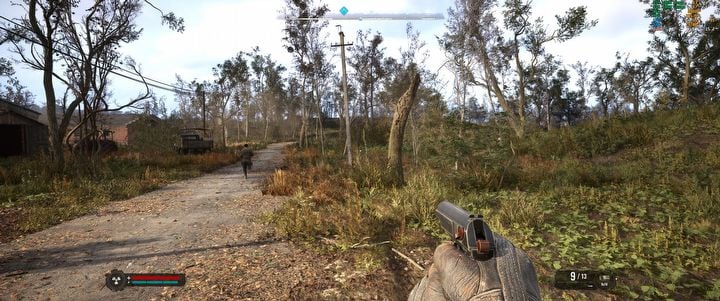
S.T.A.L.K.E.R. 2: Heart of Chornobyl, GSC Game World, 2024S.T.A.L.K.E.R. 2: Heart of Chornobyl, GSC Game World, 2024
It's also interesting when some NPC stands in the door that you need to go through to continue a certain mission, but they don't move. In this case, usually the only remedy is to load the save and hope that the door will be usable.
For me, probably the most annoying bug (apart from the ones preventing progression) that completely ruined my immersion in STALKER 2 were the disappearing sounds of gunfire and some other effects during fights. It happened very often, basically in every third fight. The game was lagging for a moment, and then I was shooting my weapon without any sound and reloading it in complete silence. I found two solutions to this problem and they worked completely randomly - sometimes the first, sometimes the other. In the best-case scenario, all I had to do was exit to the menu in the middle of a glitched fight, change anything, and return to the game with sound. Sometimes, however, it didn't help and I had to restart the entire game.
There were also a lot of situations where the game simply gave up and closed down, showing the bug reporting tool at the same time. I think that if I had to specify an exact amount, then during 6 days of testing, the game crashed about 4-5 times.
STALKER 2 can also boast a fairly "standard" set of bugs for an AAA game. More than once I found myself falling under the map with no way to get out of the void, another time, after loading a save, the game transported me to... the first location in the game and completely took away the ability to move or press any key - pressing alt+F4 helped.
The camp from the beginning of the game was also interesting - I shot everyone there from a distance, and when I approached closer, all the dead enemies were doing so-called "T-Pose." It probably won't surprise anyone either that NPCs, mutants, and other creatures constantly pass through each other and it seems that the character collision system with the environment is very weak. It also happened a few times that after I shot one enemy, instead of hiding behind cover or heading in my direction, the rest started to circle around and then zigzag with their legs at a very strange angle.
I also don't like the controller controls in the PC version, because shooting is very imprecise, completely different than in most TPP games. Additionally, when you have a controller connected to your PC and decide to switch to a keyboard and mouse, you need to save the game, turn off the controller, turn off the game and restart it. If you don't do this, the game will start glitching and the icons will change from keyboard to controller several times per second.
At the end of the tests, I also noticed that many surfaces on which light is cast had a downright stroboscopic effect. Textures flicker when my character moves and it looks absolutely terrible. Sometimes you can see that larger objects (e.g. buildings) suddenly appear in the frame despite the fact that trees, vegetation, and smaller structures load faster.
The graphics are a strong point of Stalker 2 (for the most part)
Now that we've got most of STALKER 2's technical issues out of the way, it's time to move on to what the game actually looks like. Fortunately, there is much more good news here than in the case of optimization. It's obvious that STALKER 2 doesn't set new trends in graphics, it's not a new Red Dead Redemption 2 or Cyberpunk 2077, but considering such a turbulent story, it still looks good.
STALKER 2 can look amazing and this is an undeniable fact – the Zone is presented here very nicely. The world is diverse, detailed, the developers filled it with plants, various buildings, camps, settlements, vehicle wrecks, wastelands, artifacts, and anomalies. It's very pleasant to see how good the open world of STALKER 2 looks. The game's artistic direction fits very well with its dark story.
Most of the areas we visit during the game are green, covered with thick grass, fallen trees and the remains of old structures that are here only to rust. Textures can also make a good impression, for example, a paint peeling off the wall looks phenomenal and realistic, with all the bumps, unevenness and cracks, although this is not the rule and there are much more ugly elements of the environment.
It seems to me that the game starts to look quite nice starting with the medium setting, and the difference between high and epic is marginal, most noticeable in shadows and particle effects.
What I liked the most in STALKER 2 were the environmental effects. Primarily the dynamic, highly atmospheric weather, a dynamic day and night cycle, and various phenomena happening in the Zone. Once, when I was finishing a quest and was about to return to camp for the night, a real lightning storm broke out and it looked so beautiful, so convincing, that I had to stop and admire it. Various kinds of whirlwinds that lift clouds of sand and leaves from the ground also look great, and the approaching night always rises the pulse, because it really gets dark and gloomy.

Dawid "DavideLi" Norkowski: The adventure with STALKER 2 began with fear. And I'm not talking here about entering the Zone for the first time, but about seeing new, recommended system requirements... Will my laptop even be able to run this game? Turns out it can. On medium settings, but I had no problem appreciating the game in terms of graphics. There was no shortage of both beautiful views (oh, Poppy Field...) and the ugly ones. Although ugly is a bit of a bad term. I would say they looked more "harsh." And this harshness fits perfectly in this game, enriching the game's narration. The only graphic problems I had were colors appearing and disappearing on the walls as quickly as my existence after fighting a Burer, or strangely appearing shadows.
However, when it comes to performance, unfortunately, it varied. As I traversed the open world, everything seemed fine, well, sometimes a minor glitch would appear, but it was nothing I couldn't get used to. The problem occurred in camps, a type of hubs, where I could feel safe. I might be able to, but can my laptop say the same? Staying there longer than 2 minutes caused the game to drop to around 10 FPS for an extended period. This definitely interfered with the reception of the game and I can understand that many players will not like it if they also encounter these problems. Unfortunately, a large number of patches didn’t fix this. Despite this, it didn't prevent me from positively perceiving the game, and although "anomalies" occur on my laptop, I grit my teeth, sip a liquor, and continue to kill mutants or bandits standing on my way.
Ray tracing is also a good addition, although unfortunately the developers gave little information about what exactly it does and it's hard to find it in the settings. However, it cannot be denied that reflections in puddles of water look great, and the sun spreads across the Zone quite realistically, creating an incredibly pleasant atmosphere.
Unfortunately, STALKER 2 currently utilizes ray tracing using Lumen technology, which is part of UE5. This means that owners of Nvidia graphics card will not benefit from dedicated ray tracing software, and the processor load will significantly increase, as I mentioned earlier. However, reports are appearing online that hardware ray tracing will be added to the game in the future.
STALKER 2 also is a mix of different graphical choices. In some places, it is evident that we are looking at elements that were created several years ago and were placed in a world that looks better than them. I also found the animations of independent characters and enemies to be lacking. They look strangely stiff and even janky in places, sometimes moving like mannequins that someone has brought to life. It's not a rule, but their range of motion is quite limited and therefore often repetitive and simply unpleasant to watch. This probably won't be fixed.
It was sometimes hard to look at vehicles, uniforms, barrels or even entire underground sections, which simply looked flat, poor and like they had been taken straight from 2014, not 2024. I understand that the long production process has left its mark here, but it's just visible and palpable. On the highest graphic settings, you can also see significant shortcomings in tessellation and geometry quality. Most of the surface is very flat, it lacks depth, and some sections of the game with brick walls look more like wallpaper with painted bricks than real bricks, actually embedded in the wall. The same applies to the ground, which often seems more like it was glued to the ground than actually settled on it.
All of this is phenomenally accompanied by excellent sound. I have the impression that other games don't have even half of the atmosphere that STALKER 2 has. Being outside during a storm causes such a whirlwind of various noises around us that it's hard to think about anything other than escape. The whistling wind signals that something might happen here soon, and the disturbing screams, moans, and growls of mutants can give you goosebumps. I haven't been this impressed with the sound in any other game for a long time.
STALKER 2 on Steam Deck? Not yet, but there's a chance
The above analysis of STALKER 2 may indicate that it is a demanding, quite pretty, buggy and badly optimized game. On top of that, it's CPU and RAM hungry, the Deck's weak points. In reality, it's better than I could have thought, because firstly, STALKER 2 works on Steam Deck, and secondly, it can achieve about 30 frames per second. Of course, this is not a constant value and it regularly drops below 20, but if you are stubborn, you could play like this.
Even on low settings, STALKER 2 on the Deck's screen looks pretty good, although the experience is spoiled by the need to set FSR in performance mode (resolution suffers greatly). However, STALKER2 is currently unplayable on Steam Deck due to the fact that it does not detect its controller and only mouse and keyboard emulation works, but it is so terrible that I will not recommend it to anyone. If the game gets a few patches, there is still a chance that it will work on the Deck in acceptable quality.
It might get better (but it's not guaranteed)
Do I see a chance for performance improvement in the near future after the game is released? I think yes, the developers have a lot of work ahead of them, but I think if Dragon's Dogma 2 has been relatively patched up, then STALKER 2, which was plagued by similar performance issues, has a chance of being patched up as well. Certainly, the first step is to add software other than Lumen that uses the CPU for ray tracing, a dedicated solution from Nvidia, which should help to relieve the GPU.
I also hope that a large number of bugs experienced by the entire editorial team in STALKER 2 will be fixed in the first days (maybe weeks) after the release. However, I know that when you jump into the Zone, you will certainly be unpleasantly disappointed with the use of the processor and how much strain STALKER 2 puts on your PC.
STALKER 2 is a great game in terms of gameplay, but also graphics. Although it has a few graphical glitches, it still holds up overall, creating a great and convincing atmosphere of the Zone. It's all the more a pity that what I played looked more like a beta version of a game that's supposed to be released in six months, not a finished product. I hope that I will soon return to you with an article in which I will praise the changes and improved optimization. For now, however, STALKER 2 is in poor technical condition.
